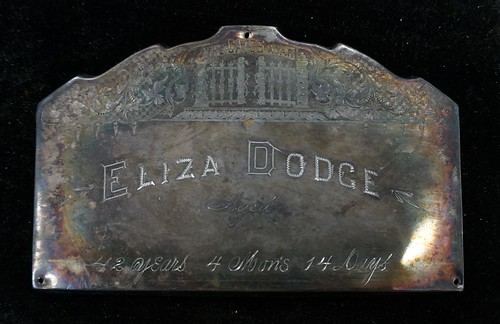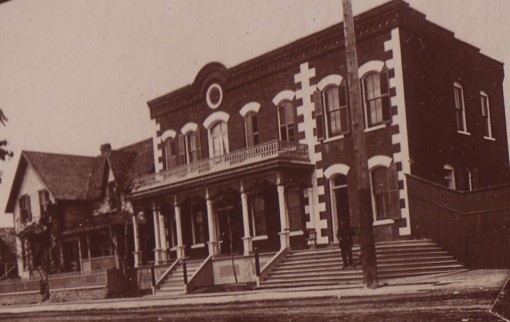It’s surprising just how often people discover items of historical interest in the walls of their properties. Today’s accession arrived in the Archives as a result of renovation work going on in a house in Mill Street in Deseronto. Grateful thanks to Shelley Dupont for bringing them in!
Three items were found inside a wall of the house. The first is a photograph of an unidentified family. The picture has suffered some damage from being inside the wall for perhaps 100 years, but the image is still fairly clear. There is nothing on the back of the photograph to identify the group.

The second photograph has more information – these three children are identified as Hazel Annie Cole, aged 3 years and 5 months; Murney Nelson Cole, aged 1 year, 9 months and Edna Kathleen Cole, aged 6 months. Hazel was born July 27 1910 in Milford, Prince Edward County – dating the picture to late 1913/early 1914. Their parents were Jesse Abbot Cole and Alta Theresa Viale.

The third item also has a Prince Edward County connection. It is a wooden rectangle, covered with black felt, and with a tin plaque, bearing the name of Eliza Dodge. This is a coffin plate. Eliza died in South Marysburgh on March 1st, 1890.

A little digging through the census and vital statistics records shows us that Eliza was married to Frederick Dodge and her maiden name was Thompson. In the census taken in 1891, the year after Eliza’s death, Frederick is working as a telephone and telegraph operator and living with his two daughters, Rosa Bell Dodge, aged seven, and Sarah Ann Cole, aged 19. Yes, Cole again. A bit more digging yields up information on a connection between Sarah Ann and the three children in the photograph: Sarah Ann, Eliza Dodge’s daughter (known as Annie), married Claude Wilmot Aylsworth Cole on December 11th, 1890. Claude was the older brother of Jesse Abbot Cole, the father of the three children
Annie Cole is the link between the last two items: she’s Eliza’s daughter and aunt to the three Cole children. Perhaps the first photograph has a Cole family connection, too? Claude and Jesse came from a family of four sons and one daughter, which just happens to be the configuration of the family in the first photograph. We’re entering into the realms of wild supposition here, but it’s just possible that this photograph represents Simon Aylsworth Cole (1844-1922), his wife Sarah Letitia Boulter (1848-1922) and their five children: Claude (1870-1938), Edna (1873-1929), George (b.1876), Arthur (1877-1941) and Jesse (1879-1937). If so, it would have been taken in around 1885.
Or they could be other people entirely!
UPDATE (Feb 15th, 2014): Thanks to Claudia (Cole) Grendon for adding some more details to this story in the comments. She tells us that Annie Cole was her grandmother and that Annie moved to Mill Street in around 1939 with her son, Wilmot Havelock Cole and his family. She died in around 1946 and (additional information from Tammy Cole Peterson) was buried in Glenwood Cemetery in Picton, where her husband, Claude, had also been laid to rest.
 Our colleagues at Elgin County Archives hold the Norman B. ‘Nipper’ Scott fonds, which includes materials relating to Scott’s career as a pilot during the First World War. Scott trained at Camp Rathbun in Deseronto, among other places, before joining the Royal Flying Corps’ No. 11 Squadron in France.
Our colleagues at Elgin County Archives hold the Norman B. ‘Nipper’ Scott fonds, which includes materials relating to Scott’s career as a pilot during the First World War. Scott trained at Camp Rathbun in Deseronto, among other places, before joining the Royal Flying Corps’ No. 11 Squadron in France.

































